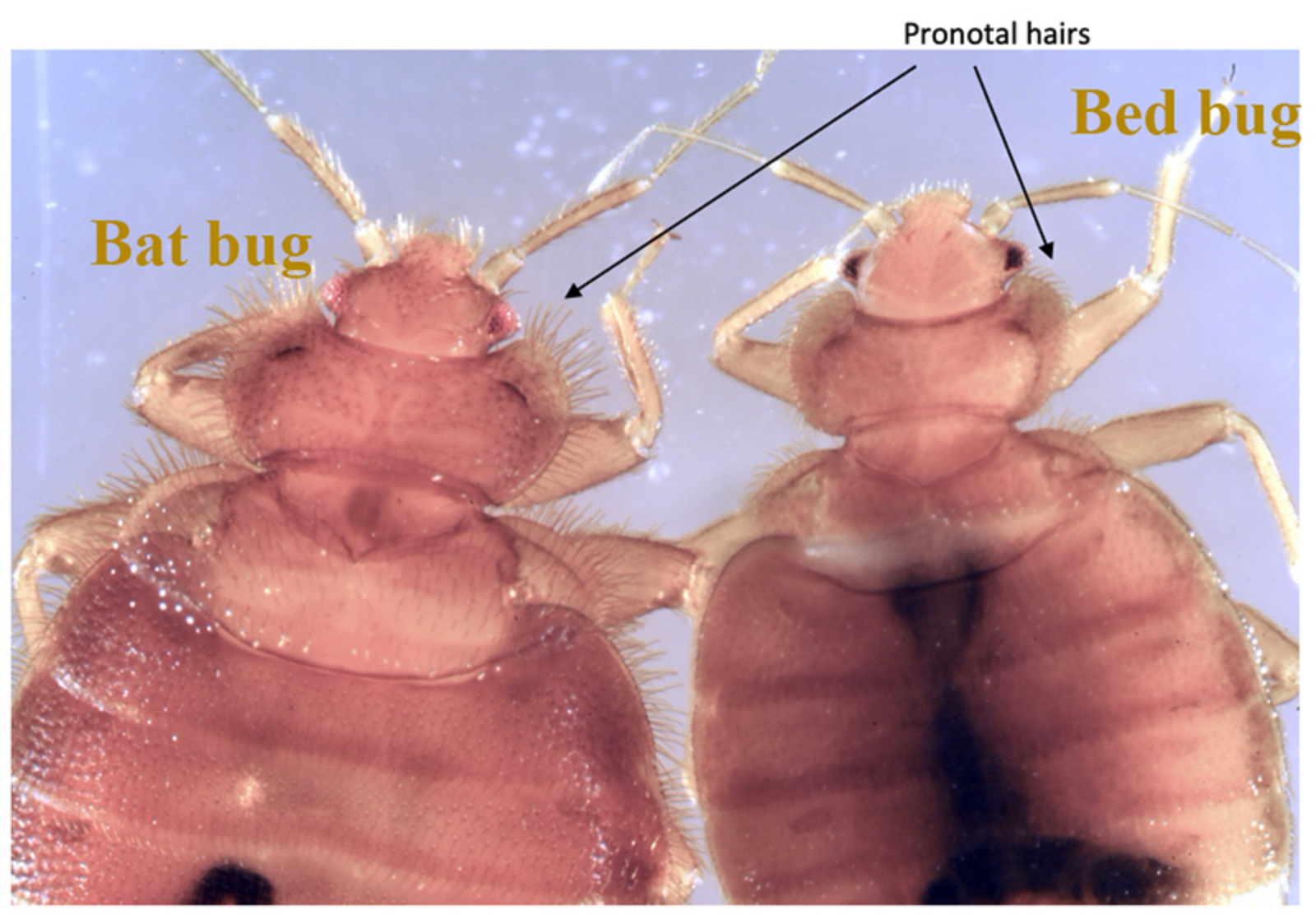Picture of the week
March 6, 2023
Sleep Tight, Don't Let The Bedbugs Bite!
Tim Gibb, Extension Entomologist, Purdue University
Bed bugs have long been associated with people and homes. Elderly people often remember bed bugs from their youth and can recount the frustrations of trying to control them. Recently, bed bugs have made a come back throughout the United States and are now fairly commonly found in homes, hotels, hospitals and residences. Even though they are not brand new pests, most people have not had a lot of experience with them. Extension educators should know what they look like and how to answer the two most commonly asked questions; (1) will they hurt me? and (2) how do I control them?
Adult bed bugs are about 1/4 inch long, oval, reddish-brown, and wingless. Their body is very flat, and they possess long, slender legs and antennae.
Bed bugs require blood in order to complete their life cycle and reproduce. They normally live in or near beds or furniture where they can come out at night and bite people. There is no evidence that bed bugs are involved in the transmission of any disease agent, thus are a much less serious pest than are mosquitoes.
Click images to enlarge
Bed bugs have long been associated with people and homes. Elderly people often remember bed bugs from their youth and can recount the frustrations of trying to control them. Recently, bed bugs have made a come back throughout the United States and are now fairly commonly found in homes, hotels, hospitals and residences. Even though they are not brand new pests, most people have not had a lot of experience with them. Extension educators should know what they look like and how to answer the two most commonly asked questions; (1) will they hurt me? and (2) how do I control them?
Adult bed bugs are about 1/4 inch long, oval, reddish-brown, and wingless. Their body is very flat, and they possess long, slender legs and antennae.
Bed bugs require blood in order to complete their life cycle and reproduce. They normally live in or near beds or furniture where they can come out at night and bite people. There is no evidence that bed bugs are involved in the transmission of any disease agent, thus are a much less serious pest than are mosquitoes.
The effect of bed bug bites varies from person to person, but they normally only produce small red welts that may itch for a short time. The bites themselves are not painful and often are not noticed, especially during the night-time. However, high populations of bugs can disrupt people's sleep and the itching can make them irritable. Just knowing that biting bugs are in ones bed also may cause emotional distress in some people.
Preventing bed bugs from becoming established is the best protection. Acquiring used beds or furniture is especially risky. Thoroughly search for bed bugs or signs of infestation in any bedding, upholstered furniture, or packing materials that might be introduced into a home or apartment. Look for feces, eggs, and shed skins, as well as for active bed bugs. Infested materials should be discarded or thoroughly treated BEFORE being brought into the home.
Bed bug control is dependent upon a series of management techniques. Our experience has shown that exclusive reliance upon any single method of control will fail to control them. Frequent inspections, attention to furniture and materials coming into the residence, steam treatments, proper selection and placement of pesticides and mattress encasements are all part of an effective bedbug management program.
See these other articles for more information on bedbugs.





